Welcome to CRISP
CRISP is a multi-faceted project to study extinction towards supernovae (SNe) and their environments through a variety of observational techniques including photometry, integral field spectroscopy and polarimetry of both SNe and their hosts, as well as machine learning tools and radiative transfer modeling.

Team and collaborators
Alejandro Yepes (U.Nacional-Colombia)
Alessandro Razza (U.Chile)
Ana Mourão (CENTRA-IST)
Ana Paulina-Afonso (CENTRA-IST)
Antonia Morales-Garaffolo (U.Cádiz)
Alberto Krone-Martins (U.Cal-Irvine)
Beatriz Pereira (CENTRA-IST)
Claudia Gutiérrez (U.Turku)
Francisco Förster (U.Chile)
João Duarte (CENTRA-IST)
João Silvestre (CENTRA-IST)
João Gonçalves (CENTRA-IST)
Joe Anderson (ESO)
Lluis Galbany (ICE-CSIC)
Marko Stalevski (O.Belgrade)
Majda Smole (O.Belgrade)
Pedro Garcia (CENTRA-FCUL)
Saby Goswami (CENTRA-IST)
Santiago González-Gaitán (CENTRA-IST)
Thomas de Jaeger (U.Hawaii)
Projects
Dust from supernova environments
- Dust attenuation slopes of high-z galaxies (PI: J. Duarte):
We obtain a set of dust attenuation slopes for a cosmological sample of SNe Ia from their host galaxies with broad-band photometry from the Dark Energy Survey (DES) complemented with available GALEX UV photometry and 2MASS NIR when available. We use the SED fitter prospector and FSPS population synthesis code. The method is tested with simulations. We find a two-dimensional dust step that is similar in magnitude and significance to the mass-step but not equal. Paper submitted.
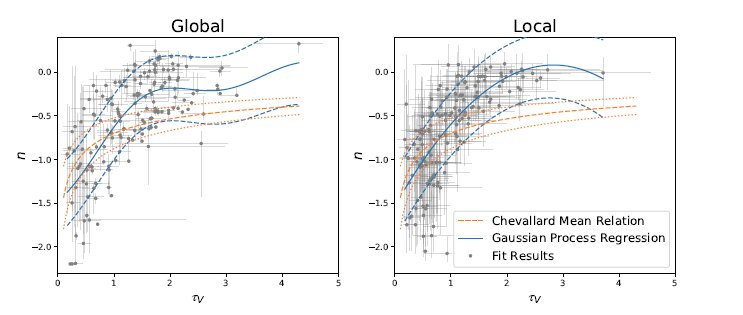
-
Dust biases in extended environments (PI: J. Duarte):
Complex star-dust geometries and orientations have a significant effect on the obtention of attenuation optical depth and attenuation curves. By simulating dusty galaxies at different orientations with Monte Carlo radiative transfer modeling with SKIRT, we examine the effect on the fitted dust parameters. -
Dust attenuation slope maps of AMUSING galaxies:
We will obtain maps of dust attenuation slopes across nearby galaxies observed with Integral Fiel Spectroscopy (IFS) from the AMUSING survey. Spectra are complemented with optical, UV and NIR broad-band photometry. The method uses the SED fitter prospector and FSPS population synthesis and is being tested with large simulations. -
Pilot project of polarimetric studies towards galaxies: the case of Circinus (PI: M. Stalevski, S. González-Gaitán):
Imaging polarimetry of the nearby Circinus galaxy, host of an Active Galactic Nucleus (AGN), taken with FORS2-VLT in multiple optical bands allows the study of the geometry and dust characteristics of the central object (Paper I) and its galaxy.
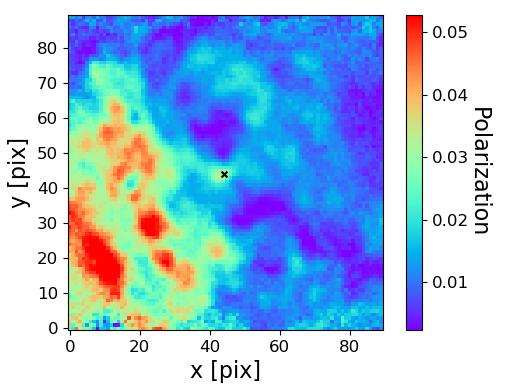
- Polarimetric studies towards galaxies (PI: J. Silvestre):
The first statistical study of multi-band imaging polarimetry with optical data from FORS2-VLT and CAFOS-CAHA will deliver nearby galaxy maps of various physical characteristics like dust and magnetic field alignment. The data will be compared with Monte Carlo radiative transfer simulations with the code SKIRT.

- Interstellar lines in IFU spectra (PI: S. Goswami):
We are obtaining the strength and velocity of interstellar lines like Na I D in Integral Fiel Spectroscopy (IFS) of SN host galaxies from the AMUSING survey. By fitting stellar population synthesis we subtract the stellar component and investigate the interstellar medium (ISM) tracers in the light of supernovae measurement.
Dust from supernovae
-
Dust extinction laws of DES supernovae (PI: J. Gonçalves):
We are obtaining a set of dust extinction laws for a cosmological sample of SNe Ia light-curves from the Dark Energy Survey (DES). We use SNpy to constrain reddening laws. The method is tested with simulations. -
Supernova polarization evolution (PI: A. Morales-Garoffolo):
We are studying the evolution of the polarization of nearby SNe with linear imaging polarimetry with CAFOS-CAHA. Polarimetric studies reveal the asymmetries of SN explosions and provide a unique view of the interstellar and circumstellar material around them. -
Narrow absorption lines in supernovae (PI: C. Gutiérrez, S. González-Gaitán):
The narrow absorption lines found in SN spectra of all types reveal the slow moving material in the line of sight towards SNe. We are investigating the frequency, strength, evolution and velocity of several species like Na I D, Ca II H & K, K I and diffuse interstellar bands for an unprecedented large sample of supernova spectra. -
Evolution of dust reddening law towards SNe Ia (PI: A. Yepes):
We investigate if the dust reddening law, Rv, changes with phase of the evolution of type Ia supernovae. We use optical and near-infrared light-curves fitted with SNpy to constrain reddening laws across time. This will shed light on progenitors by constraining possible circumstellar material and dust properties towards SNe Ia.
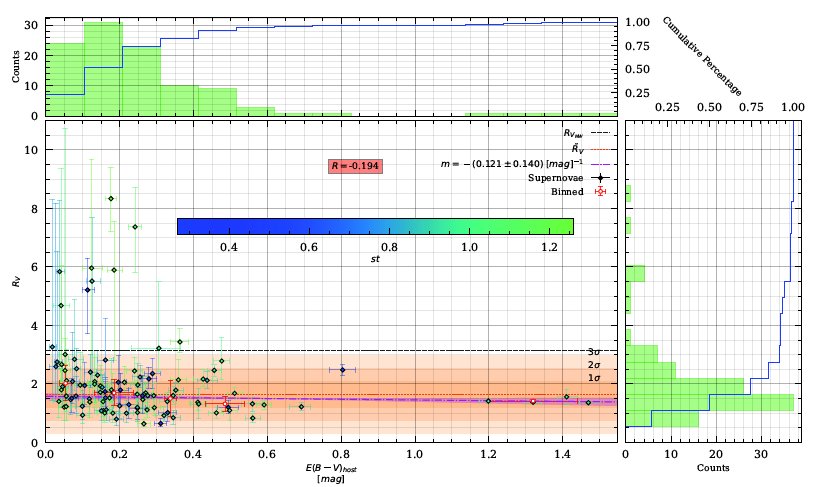
Impact of dust on cosmology
-
ARGAS: Artifically Redshifting of Galaxies (PI: A. Paulina-Afonso):
Studies have shown that type Ia supernova distance estimation improves when using an additional term related to the host galaxy mass. However, the bias and systematics of using a limited set of broad-band filters across a large redhift range has never been evaluated. With extensive simulations of nearby integral field spectroscopy (IFS) galaxies set at high redshifts, we study here the impact of effects like dimming, scaling and SED fitting in the mass-step used in cosmology for current and future SN surveys. Paper published.
-
Impact of varying colour-luminosity relation in type Ia supernova cosmology (PI: T. de Jaeger, S. González-Gaitán):
Type Ia SN cosmology has been essential in determining the accelerated expansion of the universe. However, the standardization of their luminosity to measure distances relies on a color-luminosity calibration that generally assumes a constant factor throughout the SN Ia population. We investigate in this project the effect of letting this parameter vary. Paper published.
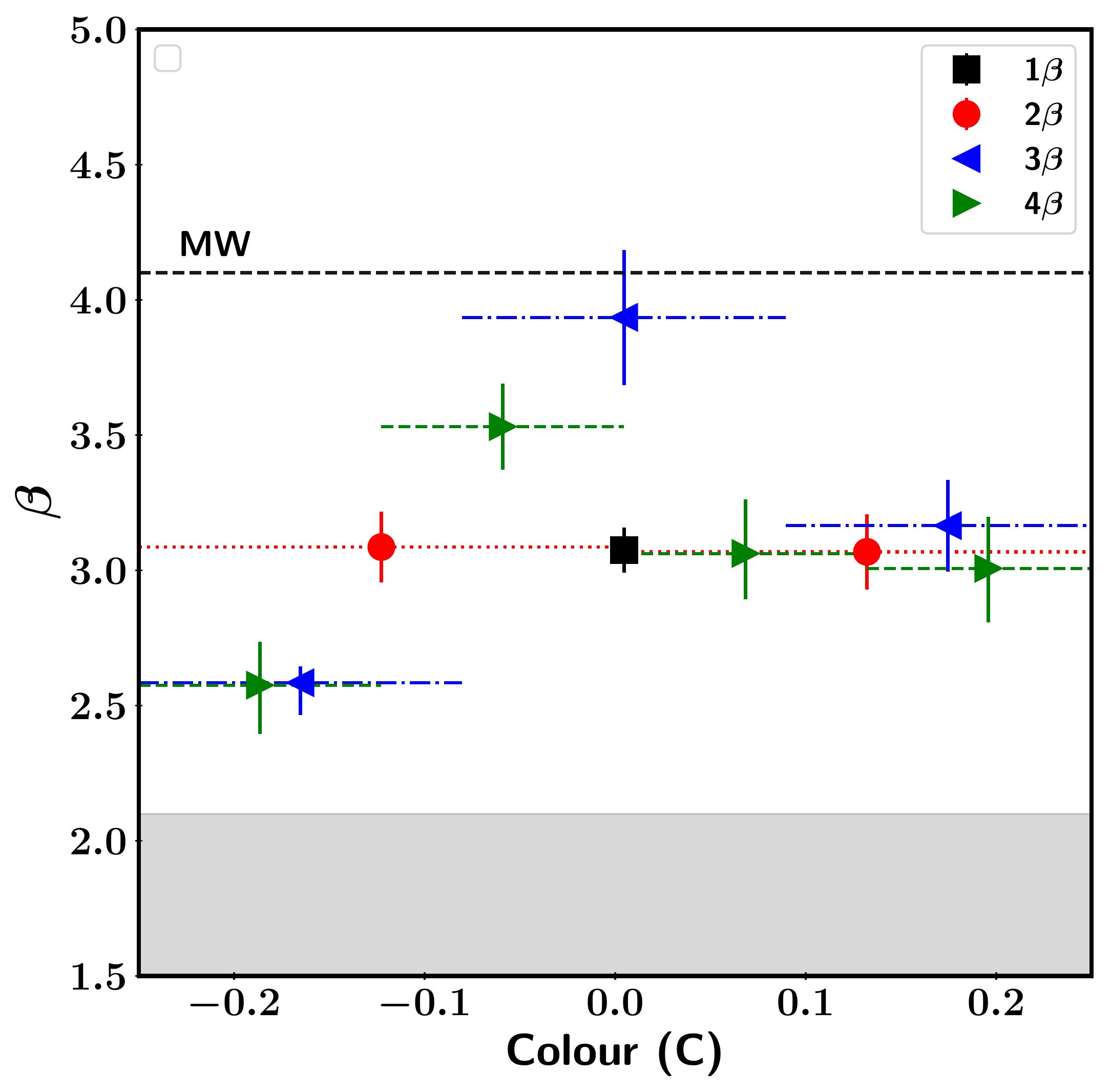
Methods
- Galaxy spatial field reconstruction with INLA (PI: S. González-Gaitán)::
The spatial correlations of astrophysical quantities are normally poorly taken into account. As part of the COIN collaboration, we use here the Integrated Nested Laplace Approximation (INLA) machinery to obtain meaningful spatial reconstructions of IFS galaxy properties. The algorithm is very powerful when there is sparsity of data. Paper published and implementation.
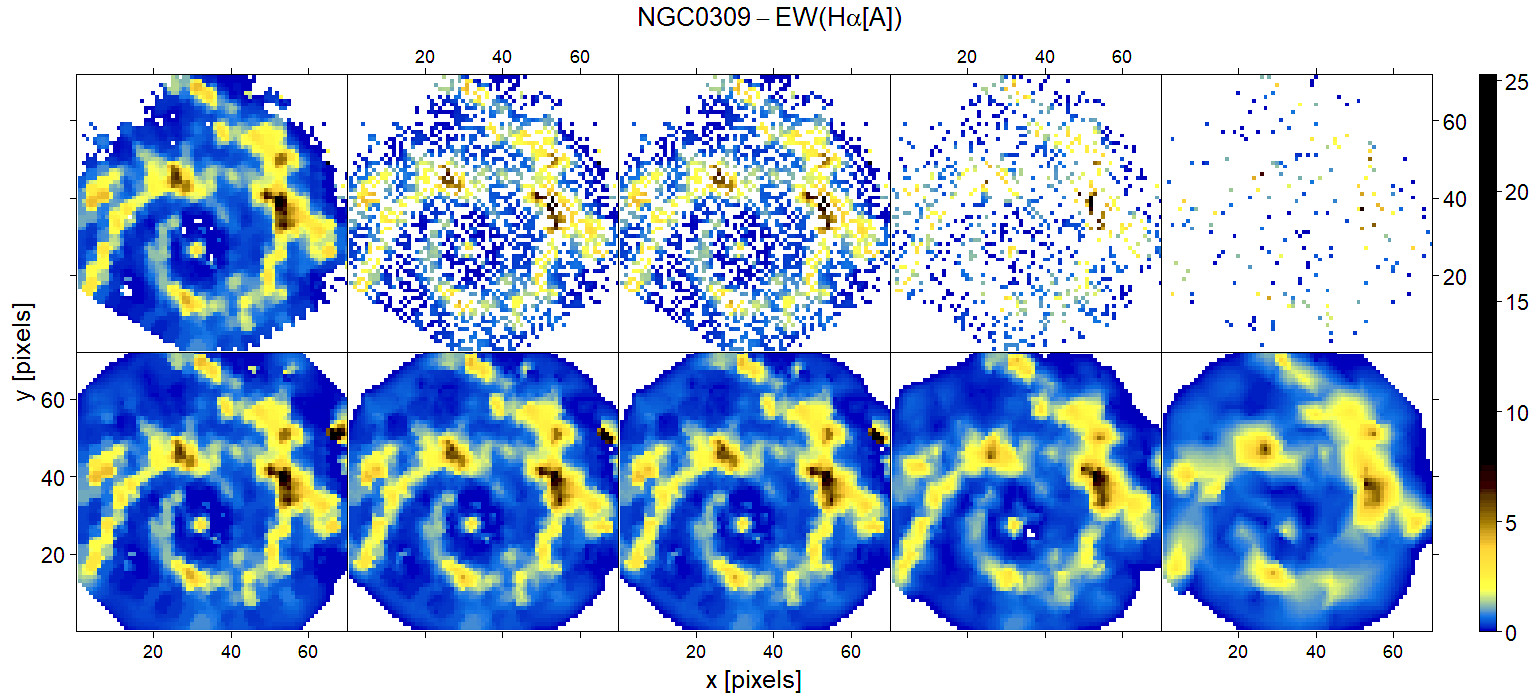
-
1.5D SED spatial fitting (PI: P. Garcia): The next step of the INLA spatial fitting applied to galaxy IFS is to simulatenously fit the wavelength and the spatial dimension. In a first 1.5D approach, we iteratively fit the SED at each spaxel with prospector while the spatial part is done with INLA.
-
Optimization of radiative transfer codes (PI: M. Smole, J. Silvestre): Monte Carlo radiative transfer (MCRT) codes like SKIRT simulate the observed distribution of light as a function of wavelength given an initial geometry and dust composition; but this is computationally expensive. We are using the INLA methodology and dimensionality reduction (PCA, NMF, autoencoders) to boost MCRT modeling of Active Galactic Nuclei (AGN) and AURIGA galaxies requiring less initial photons and less compuational time. Paper I focuses on galaxies with PCA/NMF and INLA, Paper II on spherical geometries with variatonal autoencoders (see also: EmulART).
-
Instrumental field polarization of FORS2-VLT (PI: S. González-Gaitán, A Mourão):
Extended imaging polarization studies requires a full characterization of the instrument which is known to produce spurious polarization patterns. We study the instrumental field polarization of the FORS2 instrument at VLT finding a radial polarization across the CCD. Paper published and implementation.
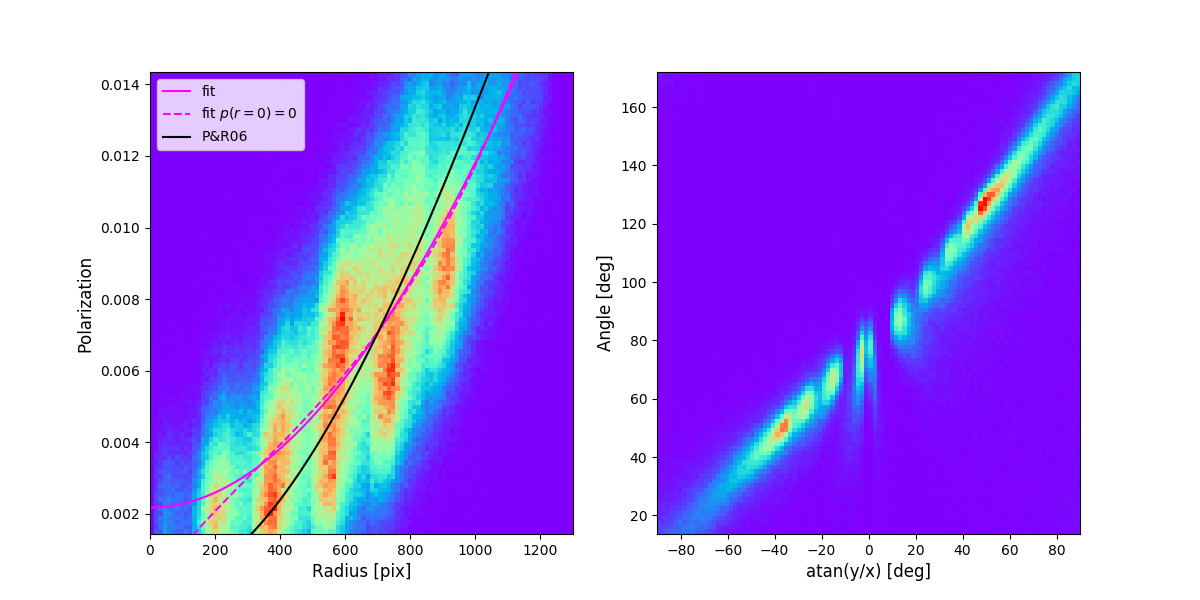
- Moon polarization patterns in the Sky (PI: B. Pereira):
The scattering from the Moon in the sky produces a polarization pattern that needs to be corrected for when performing polarimetric observations in the night. We are investigating the observed pattern taken with FORS2-VLT data compared with single scattering and multiple scattering models.
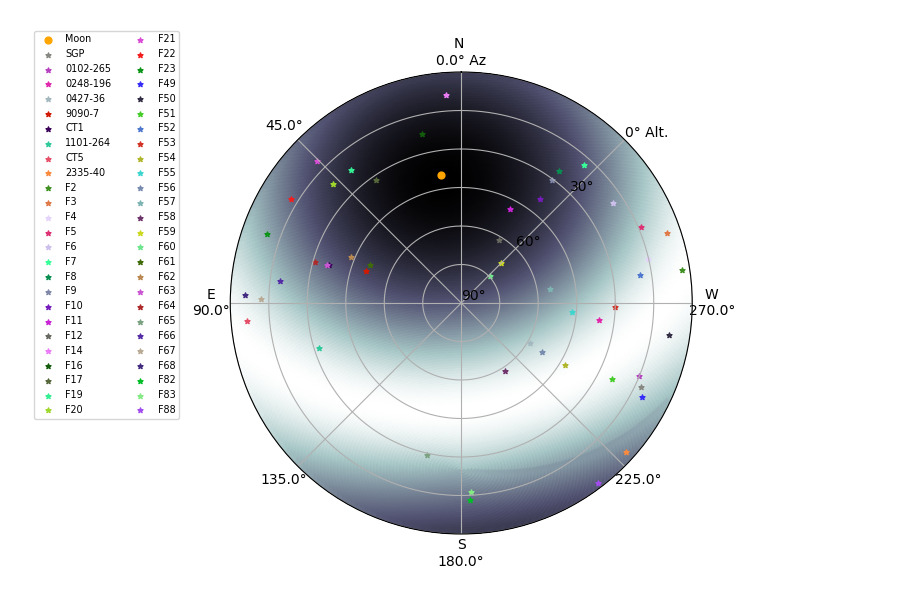
Meetings
Some previous meetings:
Acknowledgement
CRISP is funded by FCT (PTDC/FIS-AST-31546/2017).